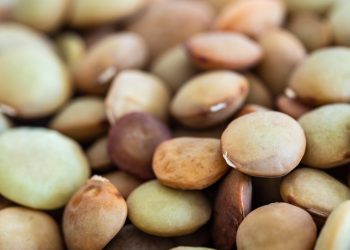Did you know that your ligaments play a crucial role in maintaining joint stability and mobility? These tough bands of connective tissue are what keep your bones together, and yet, they often get overlooked in discussions about fitness and health. If you’re like me, you might be searching for ways to fortify your ligaments naturally. One intriguing option that has gained popularity is propolis, a resin-like substance produced by bees. Let’s dive into some natural remedies that combine the power of propolis with other ingredients to help strengthen those all-important ligaments.
Contents
Understanding Propolis
Before we get into the remedies, let’s talk about what propolis actually is. Propolis is a sticky substance that bees create by mixing their saliva with tree resins. It’s packed with antioxidants, vitamins, and minerals, which contribute to its health benefits. Some studies suggest that propolis can have anti-inflammatory and healing properties, making it a potential ally for ligament health.
The Science Behind Propolis
Research is still ongoing, but some studies have shown that propolis can help with tissue repair. For instance, a study published in the Journal of Medicinal Food found that propolis may enhance the healing process in various tissues due to its anti-inflammatory and antioxidant properties (Kujawska et al., 2018).
So, how can we harness this bee product to strengthen our ligaments? Here are five natural remedies that incorporate propolis.
1. Propolis and Turmeric Tonic
Why It Works
Turmeric contains curcumin, a compound known for its anti-inflammatory properties. When combined with propolis, you create a powerful tonic that may help reduce inflammation and promote healing.
How to Make It
-
Ingredients:
- 1 cup of warm water
- 1 teaspoon of turmeric powder
- 1 teaspoon of propolis extract
- Honey (optional, for taste)
-
Instructions:
- Mix the turmeric powder and propolis extract in warm water.
- Stir well and add honey if desired.
- Drink this tonic daily, especially after workouts.
Pros and Cons
Pros: Both turmeric and propolis have antioxidant properties, which may aid in reducing oxidative stress on the ligaments.
Cons: Some people may experience stomach upset from turmeric. Always start with a small amount to see how your body reacts.
2. Propolis and Ginger Infusion
Why It Works
Ginger is another powerhouse when it comes to fighting inflammation. It can help increase circulation, which is vital for delivering nutrients to your ligaments.
How to Make It
-
Ingredients:
- 1 cup of water
- 1 tablespoon of fresh ginger, sliced
- 1 teaspoon of propolis extract
- Lemon juice (optional)
-
Instructions:
- Boil the water and add the ginger slices.
- Let it simmer for about 10 minutes.
- Strain the ginger out, add the propolis extract, and a splash of lemon juice for flavor.
-
Drink this infusion once a day.
Pros and Cons
Pros: Ginger has been shown to have anti-inflammatory effects, which can complement the benefits of propolis.
Cons: High doses of ginger can lead to digestive issues. Moderation is key.
3. Propolis and Aloe Vera Gel
Why It Works
Aloe vera is well-known for its soothing properties, particularly for skin and minor injuries. When applied topically, it can help reduce inflammation and promote healing.
How to Use It
-
Ingredients:
- 2 tablespoons of aloe vera gel
- 1 teaspoon of propolis extract
-
Instructions:
- Mix the aloe vera gel with propolis extract.
- Apply it to the affected area of your ligaments, massaging gently.
-
Use this mixture twice a day for best results.
Pros and Cons
Pros: This topical application can provide quick relief and may accelerate healing.
Cons: Some individuals may be allergic to aloe vera. Always perform a patch test first.
4. Propolis-Infused Olive Oil
Why It Works
Olive oil is rich in healthy fats and antioxidants. Infusing it with propolis can create a powerful oil that can be used for cooking or as a salad dressing, benefiting overall health, including ligament strength.
How to Make It
-
Ingredients:
- 1 cup of olive oil
- 1 tablespoon of propolis extract
-
Instructions:
- Combine the olive oil and propolis extract in a glass jar.
- Let it sit for a week in a cool, dark place, shaking it occasionally.
-
Use this oil in your cooking or as a dressing.
Pros and Cons
Pros: This method allows you to incorporate propolis into your diet easily.
Cons: The flavor of propolis can be strong, so start with a small amount.
5. Propolis and Collagen Supplements
Why It Works
Collagen is the main protein found in ligaments, tendons, and cartilage. Combining collagen supplements with propolis can potentially enhance ligament health.
How to Use It
-
Ingredients:
- 1 serving of collagen powder (follow package instructions)
- 1 teaspoon of propolis extract
-
Instructions:
- Mix the collagen powder with water or a smoothie.
- Add the propolis extract and stir well.
-
Consume this daily for optimal results.
Pros and Cons
Pros: This combination can support ligament health from the inside out.
Cons: Some collagen supplements may not be vegan-friendly, and you should check for allergens.
FAQs
1. Is propolis safe for everyone?
While propolis is generally safe for most people, those with bee allergies should avoid it. Always consult a healthcare provider before starting any new supplement.
2. How long does it take to see results?
Results can vary based on individual health and consistency in usage. Some people may notice improvements within a few weeks, while others may take longer.
3. Can I use propolis if I’m pregnant?
There’s limited research on the safety of propolis during pregnancy. Consult your healthcare provider for personalized advice.
4. Can propolis replace medical treatment for ligament injuries?
No, while propolis has potential health benefits, it should not replace professional medical treatment. Always consult a qualified healthcare provider for injuries.
Conclusion
Incorporating natural remedies like propolis into your routine can be a great way to support ligament health. While more research is needed to fully understand the benefits, the combination of propolis with other anti-inflammatory ingredients like turmeric, ginger, and collagen can provide a holistic approach to wellness.
Let’s be real: our bodies are complex, and what works for one person may not work for another. It’s all about finding what fits your lifestyle and health needs. Remember, it’s wise to consult a healthcare provider before making significant changes to your health routine.
This article is for educational purposes only and is not a substitute for professional medical advice. Always consult a qualified healthcare provider before making changes to your health routine.
References
- Kujawska, M., Kuczynski, J., & Wysocka, E. (2018). The role of propolis in the healing process: A review. Journal of Medicinal Food, 21(1), 1-7. https://doi.org/10.1089/jmf.2017.0054
- Mayo Clinic. (n.d.). Propolis: A natural remedy. Retrieved from https://www.mayoclinic.org/healthy-lifestyle/nutrition-and-healthy-eating/expert-answers/propolis/faq-20058208
- NIH. (n.d.). Propolis. Retrieved from https://nccih.nih.gov/health/propolis
Get Your FREE Natural Health Guide!
Subscribe now and receive our exclusive ebook packed with natural health tips, practical wellness advice, and easy lifestyle changes — delivered straight to your inbox.














